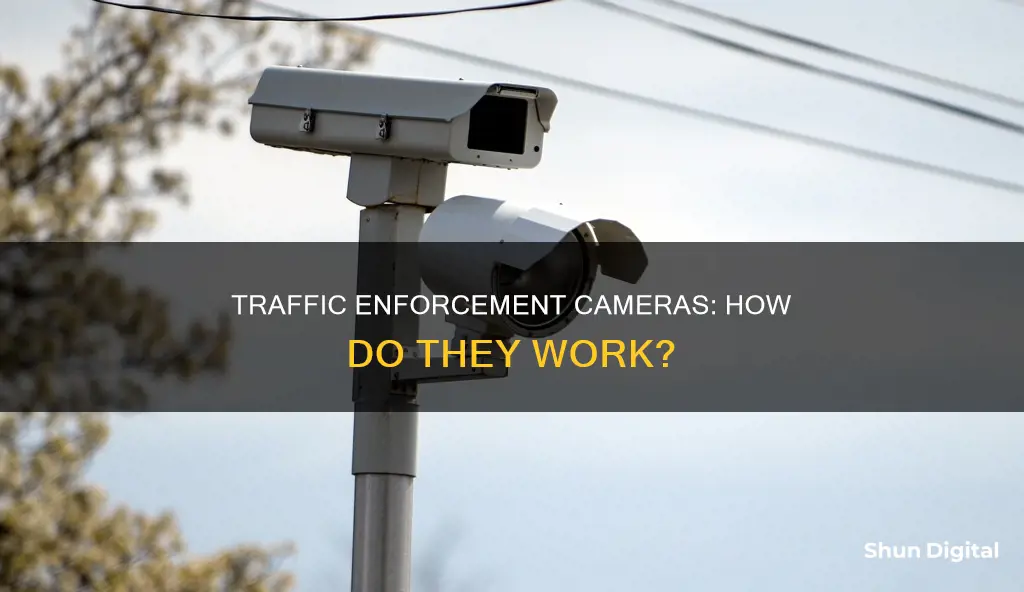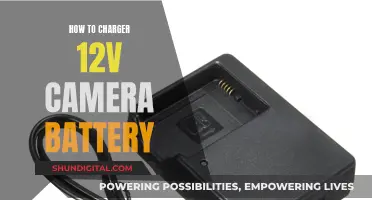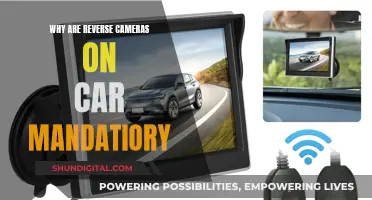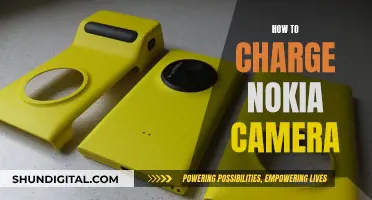
Traffic enforcement cameras are cameras mounted beside or over roads or installed in enforcement vehicles to detect driving offences. These include speeding, vehicles running red lights, unauthorised use of bus lanes, or vehicles inside congestion charge areas. They are also known as red light cameras, speed cameras, road safety cameras, photo radar, or Safe-T-Cam, among other names.
| Characteristics | Values |
|---|---|
| Purpose | Detect motoring offences, including speeding, vehicles going through a red traffic light, vehicles going through a toll booth without paying, unauthorized use of a bus lane, or for recording vehicles inside a congestion charge area |
| Installation | Mounted beside or over a road or installed in an enforcement vehicle |
| Functionality | May be linked to an automated ticketing system |
| Effectiveness | A worldwide review of studies found that speed cameras led to a reduction of "11% to 44% for fatal and serious injury crashes" |
| Legality | In 2019, Texas banned the use of red-light cameras, but some cities are exempt due to existing contracts |
What You'll Learn

Traffic enforcement cameras are used to detect speeding
Traffic enforcement cameras are a type of technology used to monitor and enforce road rules and safety. They are typically mounted beside or above a road or installed in an enforcement vehicle. These cameras are used to detect a range of motoring offences, including speeding, running red lights, unauthorised use of bus lanes, and congestion charge violations.
Traffic enforcement cameras play a crucial role in speeding detection and deterrence. They employ various technologies, such as Doppler radar, LIDAR, stereo vision, or automatic number-plate recognition, to monitor vehicles' compliance with speed limits. When a vehicle exceeds the speed limit, the camera system captures relevant data, including images or videos of the vehicle, its license plate, and the speed displayed. This evidence is then used to issue citations or fines to the registered owner of the vehicle.
The effectiveness of traffic enforcement cameras in reducing speeding and improving road safety has been well-documented. Studies have shown that the presence of speed cameras leads to a significant reduction in speeding-related accidents and injuries. For example, a worldwide review of studies found that speed cameras resulted in an 11% to 44% decrease in fatal and serious injury crashes. Additionally, the British Medical Journal reported that speed cameras effectively reduced accidents and injuries near their locations, advocating for their wider deployment.
In some jurisdictions, such as Texas, there has been controversy and legal ambiguity surrounding the use of traffic enforcement cameras. While many Texas residents opposed the installation of these devices due to privacy concerns, others debated the financial repercussions of the resulting tickets. As a result, in 2019, Texas banned the use of red-light cameras and prohibited local authorities from issuing citations based on recorded traffic signal enforcement photos. However, certain cities in Texas were allowed to continue using these cameras until their existing contracts with vendors expired.
How to Identify Your Computer's Camera Model
You may want to see also

They can be used to monitor vehicles going through red lights
Traffic enforcement cameras are a type of camera that can be mounted beside or over a road or installed in an enforcement vehicle to detect motoring offences. One of the most common uses of these cameras is to monitor vehicles going through red lights.
Red light cameras are a type of traffic enforcement camera that can be used to monitor vehicles passing through an intersection with a traffic signal. They are synchronised with the traffic signals and are triggered by any vehicle entering the intersection above a preset minimum speed and following a specified time after the signal has turned red. When triggered, the camera takes multiple images of the car during the process of the violation. The owner of the vehicle will then receive a ticket in the mail, including photographs of their vehicle's violation and their license plate, as well as instructions for paying the associated fine or appearing in court.
Red light cameras are controversial, as they are automated ticket-issuing systems. However, they have been shown to be effective in reducing accidents and injuries. For example, a study by the Insurance Institute for Highway Safety (IIHS) found that red light camera enforcement reduced fatal red light running crash rates in large cities by 21%. Additionally, the British Medical Journal reported that speed cameras were effective at reducing accidents and injuries in their vicinity and recommended wider deployment.
It is important to note that the laws and regulations regarding red light cameras may vary depending on the state or country. For example, as of June 2023, eight states in the US have banned red light cameras, while nearly 350 US communities use them.
Playing 264 Surveillance Footage: A Step-by-Step Guide
You may want to see also

They can be used to detect vehicles going through toll booths without paying
Traffic enforcement cameras are an effective way to monitor and manage traffic violations. These cameras can be mounted beside or above roads, or installed in enforcement vehicles, to detect and deter various motoring offences. One such offence that these cameras can help with is identifying vehicles that go through toll booths without paying.
Toll booths are an essential part of road infrastructure, providing a means to collect tolls or fees from vehicles using certain roads or facilities. With the advancement of technology, toll booths have evolved from traditional manual booths to electronic toll collection systems, utilising cameras to capture vehicles' licence plates for billing purposes. This helps ensure accurate billing and reduces the time vehicles spend at toll booths, improving traffic flow and reducing pollution.
The use of cameras in toll booths offers several advantages. High-resolution cameras capture clear images of vehicles' licence plates, enabling accurate billing of tolls. Additionally, these cameras can record brief videos of passing vehicles, providing valuable data such as the number of axles, which is a factor in determining toll rates for vehicles.
While the primary purpose of toll booth cameras is to facilitate toll collection, these cameras can also serve other functions. For example, they can help identify vehicles involved in accidents or regulation violations by associating licence plates with other vehicle data, such as ownership information. This capability can be crucial in ensuring accountability and resolving legal matters.
Furthermore, toll booth cameras can play a role in enhancing road security. By capturing vehicle information, these cameras can be used to identify potential dangers, such as vehicles carrying dangerous goods, and enable authorities to prepare and respond to potential threats effectively. This aspect of toll booth cameras contributes to the overall safety and security of the road network.
In summary, traffic enforcement cameras are a valuable tool in detecting vehicles that evade toll payments at booths. By utilising licence plate recognition technology, these cameras facilitate accurate billing, improve traffic flow, and enhance road security. Additionally, the data captured by these cameras can be used for various purposes, including accident investigation and security measures, making them a versatile component of modern toll collection systems.
Best Car Camera Options for Your Vehicle
You may want to see also

They can be used to detect unauthorised use of bus lanes
Traffic enforcement cameras are cameras that are mounted beside or over a road or installed in an enforcement vehicle to detect motoring offenses. They are also known as red light cameras, speed cameras, road safety cameras, road rule cameras, photo radar, photo enforcement, bus lane cameras, and more. One of their many uses is to detect the unauthorized use of bus lanes.
Bus lanes are designated lanes on roads reserved for buses and sometimes other authorized vehicles, such as emergency vehicles or bicycles. They are implemented to improve public transportation efficiency and reduce traffic congestion. Bus lane enforcement aims to prevent unauthorized vehicles from entering or using these designated lanes to maintain the effectiveness and reliability of public transportation services.
Bus lane cameras can be fixed or mobile and are often used in conjunction with automatic number plate recognition (ANPR) technology. They are typically installed along the bus lane to capture images or video footage of violating vehicles. When a vehicle is detected illegally driving in a bus lane, the camera automatically records a minimum eight-second-long video for evidence. The ANPR technology identifies and registers the vehicle's license plate, allowing for efficient detection of violations by quickly comparing the captured license plate information against a database of authorized vehicles.
In some cases, bus lane enforcement cameras utilize a sensor in the road that triggers the number plate recognition camera. This system compares the vehicle registration plate with a list of approved vehicles and records images of other vehicles. Another approach is to mount cameras on buses themselves, such as in London, where they monitor "Red routes" on which stopping is not allowed except for taxis and disabled parking permit holders.
The use of bus lane cameras helps maintain the efficiency of public transportation systems, reduce congestion, and encourage the use of public transit options. They serve as a deterrent by capturing evidence to support fines or penalties for vehicle owners who violate bus lane regulations.
The Evolution of Autofocus in Mirrorless Cameras
You may want to see also

They can be linked to an automated ticketing system
Traffic enforcement cameras are an effective way to improve road safety and reduce crashes. These cameras are usually mounted beside or over a road or installed in an enforcement vehicle to detect motoring offenses, including speeding, red-light running, unauthorized use of bus lanes, and vehicles going through toll booths without paying. One of the key features of these cameras is their ability to be linked to an automated ticketing system, which streamlines the enforcement process and enhances road safety.
The automated ticketing system operates in conjunction with the traffic enforcement cameras to identify and penalize vehicles that violate traffic rules. This system utilizes advanced technology, such as automatic number-plate recognition, to capture images of vehicles committing offenses and issue tickets accordingly. The efficiency of this process is demonstrated by the immediate issuance of tickets to offenders, reducing the need for manual intervention.
The automated ticketing system offers several advantages. Firstly, it provides an unbiased and consistent method of enforcing traffic rules, ensuring that all vehicles are treated equally. Secondly, it improves road safety by acting as a deterrent against speeding and red-light running, encouraging drivers to adopt safer driving habits. Additionally, the system helps reduce the workload on law enforcement agencies by automating the identification and ticketing process, allowing them to focus on other critical tasks.
While the automated ticketing system has proven effective, it has also faced some criticism and legal challenges. Some argue that these systems infringe on privacy rights and enable mass surveillance of vehicle movements, which can indirectly track the movements of vehicle owners. There have also been concerns about the accuracy of these systems, with some instances of erroneous citations being issued. However, the overall body of evidence suggests that the use of automated ticketing systems linked to traffic enforcement cameras has a positive impact on road safety.
To address the concerns raised, it is essential to have stringent oversight and regulations in place. This includes ensuring that the systems are operated by government agencies or in cooperation with law enforcement, as mandated by laws such as California's Vehicle Code. Additionally, establishing clear guidelines for data handling and privacy protection can alleviate privacy concerns. Regular audits and reviews of the systems' accuracy and performance can also enhance their reliability and address any potential issues.
Wide Camera Mode: Is it Available on the Samsung Note 9?
You may want to see also
Frequently asked questions
Traffic enforcement cameras are cameras installed at traffic signals or in enforcement vehicles to detect motoring offenses, such as speeding, vehicles running red lights, or unauthorized use of bus lanes.
Some examples include red-light cameras, speed cameras, bus lane cameras, and congestion charge cameras.
Studies have shown that traffic enforcement cameras can lead to a significant reduction in accidents and injuries. For example, a review of studies found that speed cameras reduced fatal and serious injury crashes by 11% to 44%. However, there are also concerns about the loss of privacy and the potential for mass surveillance by governments.







